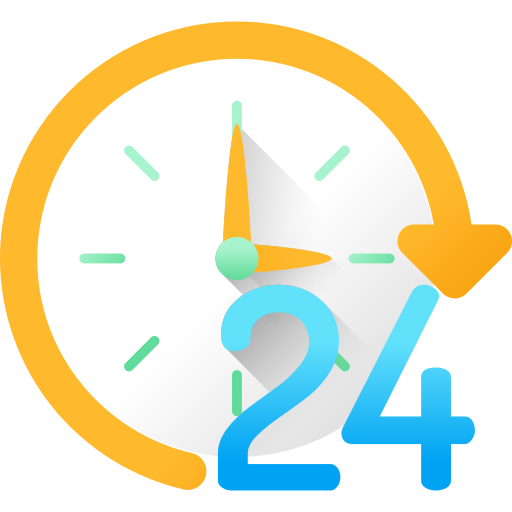Remote Patient Monitoring Market Size
The global remote patient monitoring market size was valued at $31.70 billion in 2025 and is projected to reach $69.57 billion by 2031, growing at a CAGR of 14.0% during the forecast period.
Remote Patient Monitoring Market Overview
Remote Patient Monitoring (RPM) is a technology-enabled healthcare solution that allows healthcare providers to track and monitor patients' health conditions remotely. By utilizing RPM devices, patients can transmit vital signs, symptoms, and other relevant health data to their healthcare professionals, enabling proactive monitoring and early intervention. This approach is particularly beneficial for managing chronic diseases, as it allows for continuous oversight and timely responses to potential health issues.
Companies can greatly benefit from implementing RPM by improving patient outcomes and satisfaction while simultaneously reducing healthcare costs. For instance, healthcare providers can prevent unnecessary hospitalizations and emergency visits by closely monitoring patients and addressing health concerns before they escalate. The integration of RPM into healthcare practices also enhances care coordination, as providers can access real-time patient data and collaborate more effectively with their teams.
Remote Patient Monitoring Market Dynamics
The remote patient monitoring market is expected to witness significant growth in the future due to the increasing prevalence of chronic diseases, growing geriatric population, advancements in telecommunications, cost-effectiveness, and rising investments. However, the data security concerns, lack of supportive reimbursement coverage, interoperability issues, and regulatory variations are restraining the growth of the market.
Furthermore, high utility of RPM, increasing focus on post-acute care, refining business models, and leveraging AI are the key trends propelling the remote patient monitoring market.
Growing Geriatric Population is Driving the Remote Patient Monitoring Market
The growing geriatric population is significantly impacting the remote patient monitoring market, as this demographic is more susceptible to chronic diseases that require ongoing management. As life expectancy increases, the need for effective healthcare solutions that allows older adults to maintain their health while living independently is becoming more critical.
Companies are responding to this demand by developing advanced RPM technologies tailored for older adults.
• For example, Koninklijke Philips N.V. has launched several health monitoring solutions aimed at elderly care, including the Philips HealthSuite, which integrates wearable devices to track vital signs and health metrics in real-time.
This technology not only empowers seniors to manage their health from home but also enables healthcare providers to monitor patients remotely, ensuring timely interventions when necessary.
• Additionally, the U.S. government has recognized the importance of RPM in geriatric care, with initiatives like the Telehealth Services Expansion Act of 2022, which aims to improve access to telehealth services for older adults, facilitating remote consultations and monitoring.
• Moreover, innovative companies like AliveCor, Inc. have introduced devices such as the KardiaMobile, a personal ECG monitor that allows seniors to track their heart health easily.
This device has gained traction among healthcare providers as a reliable tool for monitoring cardiac conditions in older patients. The integration of such technologies not only enhances the quality of care for the aging population but also alleviates the burden on healthcare systems by reducing hospital visits and improving patient outcomes. As the geriatric population continues to grow, the RPM market is poised for significant expansion, driven by the demand for effective, accessible, and patient-centered healthcare solutions.
By End User, the Home-Care Settings Segment is projected to be the Largest Segment in the Remote Patient Monitoring Market
Home-care settings is the largest segment in the remote patient monitoring market, driven by the growing need for efficient healthcare solutions that cater to patients with chronic conditions while allowing them to maintain their independence.
• Companies like Medtronic have introduced innovative RPM devices, such as the Guardian Connect system, which enables patients to monitor their glucose levels from home, providing real-time data to healthcare providers for timely interventions.
Additionally, the COVID-19 pandemic has accelerated the adoption of RPM technologies, as healthcare systems sought to minimize in-person visits and reduce the risk of infection. Government initiatives, such as the Centers for Medicare & Medicaid Services (CMS) expanding reimbursement policies for telehealth services, have further supported the integration of RPM into home care, making it more accessible for patients.
• For instance, in 2023, the Indian government launched the National Digital Health Mission, which aims to enhance the use of digital health technologies, including RPM, to improve healthcare delivery in home settings.
These factors collectively illustrate the significant demand for RPM in home-care environments, driven by the need for effective chronic disease management and the desire for patient-centered care.
By Geography, Asia-Pacific Holds the Largest Share in the Market Revenue
Asia-Pacific holds the largest share of the remote patient monitoring market, driven by the rising prevalence of chronic diseases, an aging population, and the increasing adoption of digital health technologies.
• For instance, cardiovascular diseases account for approximately 26.5% of deaths in the Asia-Pacific region, highlighting the urgent need for effective monitoring solutions.
• Companies like Philips Healthcare have responded to this demand by launching innovative RPM devices and platforms that enable continuous health monitoring, thereby facilitating timely interventions.
• Additionally, government initiatives, such as the National Digital Health Mission launched in India in 2020, aim to enhance healthcare delivery through digital solutions, including RPM technologies, particularly in rural areas where access to healthcare is limited.
The COVID-19 pandemic further accelerated the adoption of RPM, as healthcare systems sought to reduce in-person visits and manage patient care remotely. These developments illustrate the robust demand for RPM in the Asia-Pacific region, driven by the need for improved healthcare accessibility and chronic disease management among a growing population.
Key Target Audience:
• Healthcare Providers
• Patients
• Payers
• Technology Companies
• Regulatory Bodies
List of the Key Players Profiled in the Report Includes:
• Biotronik SE & Co. KG
• Alive Cor, Inc.
• TytoCare Ltd.
• Teledoc Health Inc.
• Vivify Health, Inc.
• Koninklijke Philips N.V.
• Brook Inc
• Blue Spark Technology
• Welch Allyn
• Health Beats
• Medtronic
• Oracle
Recent Developments:
• In February 2024, BIOTRONIK SE & Co. KG announced the termination of its distribution agreements with Acutus Medical, Inc., effective immediately, based on alleged breaches of contractual obligations by Acutus Medical
Market Segmentation:
The research report includes in-depth coverage of the industry analysis with size, share, and forecast for the below segments:
Market by, Component:
• Monitoring Devices
• Services
• Software
Market by, Application:
• Cardiovascular Diseases
• Diabetes
• Neurological Diseases
• Oncology
• Respiratory Diseases
• Sleep Disorders
• Weight Management & Fitness Monitoring
• Other Applications
Market by, End User:
• Home Care Settings
• Hospitals
• Long Term Care Facilities
• Other End Users
Market by, Geography:
The remote patient monitoring market report also analyzes the major geographic regions and countries of the market. The regions and countries covered in the study include:
• North America (The United States, Canada, Mexico), Market Estimates, Forecast & Opportunity Analysis
• Europe (Germany, France, UK, Italy, Spain, Rest of Europe), Market Estimates, Forecast & Opportunity Analysis
• Asia Pacific (China, Japan, India, South Korea, Australia, New Zealand, Rest of Asia Pacific), Market Estimates, Forecast & Opportunity Analysis
• South America (Brazil, Argentina, Chile, Rest of South America), Market Estimates, Forecast & Opportunity Analysis
• Middle East & Africa (UAE, Saudi Arabia, Qatar, Iran, South Africa, Rest of Middle East & Africa), Market Estimates, Forecast & Opportunity Analysis
The report offers insights into the following aspects:
• Analysis of major market trends, factors driving, restraining, threatening, and providing opportunities for the market.
• Analysis of the market structure by identifying various segments and sub-segments of the market.
• Understand the revenue forecast of the market for North America, Europe, Asia-Pacific, South America, and Middle East & Africa.
• Analysis of opportunities by identification of high-growth segments/revenue pockets in the market.
• Understand major player profiles in the market and analyze their business strategies.
• Understand competitive developments such as joint ventures, alliances, mergers and acquisitions, and new product launches in the market.
Table Of Content
1 Market Introduction
1.1 Market Definition
1.2 Research Scope and Segmentation
1.3 Stakeholders
1.4 List of Abbreviations
2 Executive Summary
3 Research Methodology
3.1 Identification of Data
3.2 Data Analysis
3.3 Verification
3.4 Data Sources
3.5 Assumptions
4 Market Dynamics
4.1 Market Drivers
4.2 Market Restraints
4.3 Market Opportunities
4.4 Market Challenges
5 Porter's Five Force Analysis
5.1 Bargaining Power of Suppliers
5.2 Bargaining Power of Buyers
5.3 Threat of New Entrants
5.4 Threat of Substitutes
5.5 Competitive Rivalry in the Market
6 Global Remote Patient Monitoring Market by, Component
6.1 Overview
6.2 Monitoring Devices
6.2.1 Cardiac Monitoring
6.2.2 Neurological Monitoring Devices
6.2.3 Respiratory Monitoring Devices
6.2.4 Multiparameter Monitoring Devices
6.2.5 Blood Glucose Monitoring Devices
6.2.6 Fetal & Neonatal Monitoring Devices
6.2.7 Weight Monitoring Devices
6.2.8 Other Monitoring Devices
6.3 Services
6.4 Software
7 Global Remote Patient Monitoring Market by, Application
7.1 Overview
7.2 Cardiovascular Diseases
7.3 Diabetes
7.4 Neurological Diseases
7.5 Oncology
7.6 Respiratory Diseases
7.7 Sleep Disorders
7.8 Weight Management & Fitness Monitoring
7.9 Other Applications
8 Global Remote Patient Monitoring Market by, End User
8.1 Overview
8.2 Home Care Settings
8.3 Hospitals
8.4 Long Term Care Facilities
8.5 Other End Users
8.5.1 Ambulance Care
8.5.2 HealthCare Payers
8.5.3 Clinical Research Organizations
9 Global Remote Patient Monitoring Market by, Geography
9.1 Overview
9.2 North America
9.2.1 US
9.2.2 Canada
9.2.3 Mexico
9.3 Europe
9.3.1 Germany
9.3.2 France
9.3.3 UK
9.3.4 Italy
9.3.5 Spain
9.3.6 Rest of Europe
9.4 Asia Pacific
9.4.1 China
9.4.2 Japan
9.4.3 India
9.4.4 South Korea
9.4.5 Australia
9.4.6 New Zealand
9.4.7 Rest of Asia Pacific
9.5 South America
9.5.1 Brazil
9.5.2 Argentina
9.5.3 Chile
9.5.4 Rest of South America
9.6 Middle East & Africa
9.6.1 UAE
9.6.2 Saudi Arabia
9.6.3 Qatar
9.6.4 Iran
9.6.5 South Africa
9.6.6 Rest of Middle East & Africa
10 Key Developments
11 Company Profiling
11.1 Biotronik SE & Co. KG
11.1.1 Business Overview
11.1.2 Product/Service Offering
11.1.3 Financial Overview
11.1.4 SWOT Analysis
11.1.5 Key Activities
11.2 Alive Cor, Inc.
11.3 TytoCare Ltd.
11.4 Teledoc Health Inc.
11.5 Vivify Health, Inc.
11.6 Koninklijke Philips N.V.
11.7 Brook Inc
11.8 Blue Spark Technology
11.9 Welch Allyn
11.10 Health Beats
11.11 Medtronic
11.12 Oracle
Report Details
| SKU Code | : DI2582 |
| Industry | : Healthcare |
| Region | : Global |
| Tables | : 174 |
| Format | : Electronic PDF |
| Published | : 2025 |
Choose License Type
Why Diligence Insights?
-

24/7 Research Support
We understand the various needs of our customers and remain always flexible in our approach. And we have a 24X7 client engagement team to ensure the best customer experience.
-

Tailor-Made Values
We consider each and every client’s business issues unique and exhibit precise solutions befitting your business goals and expectations.
-

Data Accuracy and Reliability
We offer a 360-degree view of the market to generate high standards and comprehensive data.
-

Customer Satisfaction
At Diligence Insights, we are committed to offering high-quality market research reports to our esteemed clients and focus on providing innovative solutions.
-

Information Security
We stand by the information security policy and stick to keeping your business information safe and secure.
